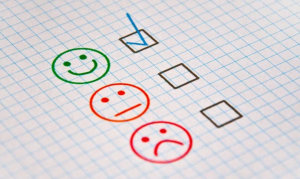
Reading (and Understanding) Scientific Articles
So you’ve started using PubTrawlr and you’re ready to dive deeper. You follow some links to the primary source, open them up….and it’s gobbledygook.
Take a deep breath. This is a very common experience. Articles are not easy to read. There is likely to be a ton of jargon, and the writing can be unclear. Academics don’t always write for non-academics.
This post takes you through some of the basic steps and questions to keep in mind while you work through the article. We update it frequently in order to have it reflect the most up-to-date experience and reflections of the PubTrawlr community.
The Big Picture
Before you do anything else, page through the whole article. These aren’t mystery novels; you don’t have to worry about spoilers. Skimming all the pages and headings can give you a good sense of articles flow, from the opening premises to the complexity of the methods to the visualizations.
We can boil any (scientific) article down to four central questions:
- What is the article trying to answer?
- How do they try to answer that question?
- What did they find?
- What does it mean?
Let’s take each of these in turn.
What is the article trying to answer?
Any article should be trying to move science forward. An article should say something that has not been said before. Generally, this is done by posing a novel question about the relationships between two things (sometimes called constructs).
Other times, the questions look backward to explore, “What have we learned about this topic so far?” This is most common in research synthesis or meta-analysis that try aggregate findings over time to tell a cumulative story.
The article should be boiled down to one central concept. A good place to identify the central questions is by looking at the abstract. Abstracts lay out the story of the article. Take this article in the image below.

Right off the bat, we can see the what and the why of this article. This helps to justify the implied question, “[For women of Haitian descent], What are the perceived benefits of participation in evangelical communities?”
How do they try to answer that question?
Think about the central question, how would you try to answer it? What type of ways would be helpful in getting closer to this answer?
There are many different ways to approach a scientific problem. Authors have the responsibility of saying why they picked a certain strategy and why they believed this particular strategy would get them closer to the answer.
You usually find this information in the methods section. Here, the author(s) will talk about how they measured what they’re interested in, how they collected their data (and from whom), and what types of statistical methods they used to make sense of the data.
What did they find?
It can be really challenging to decode statistical results, especially if you are unfamiliar with the more advanced tests. Therefore look at the figures here to see if you can determine the relationship between any of the constructs.
In this below figure, we’re looking at whether the content of COVID stories were positive or negative over time. We can see wild swings, with positive and negative values jumping up and down before settling into a general, slightly upward trend. Looking at this, what can you say about the mood of COVID-19 stories over time?
What does it mean?
Spend some time yourself trying to determine what the big take-home messages of the article are. I had a professor who once claimed that he never read conclusion sections. That’s a bit extreme.
The conclusion (or discussion) is where the authors spend some time breaking down the implications of their findings. They often use this section to consider directions for future research. If the study was particularly well done, then you should have a pretty good idea about what should happen next.
A word of caution — Publication Bias
It’s hard to get something published (usually, there are some pretty terrible journals out there). One problem is that it is hard to publish something that doesn’t work or a study that didn’t find anything. The articles that you encounter are more likely to be positive, meaning that they have found *something*. Keep this in mind when you are reading. In almost all cases, it is likely that the results are skewed to the positive. Don’t forget to read with a critical eye!
Summing it all up
Don’t worry if you don’t understand everything. Unless you’re of the experts in the field, you will find it hard to dig through articles. However, by trying to keep those four questions in your head, you can get past the 60% threshold of understanding and use that to further your exploration. Happy reading!




